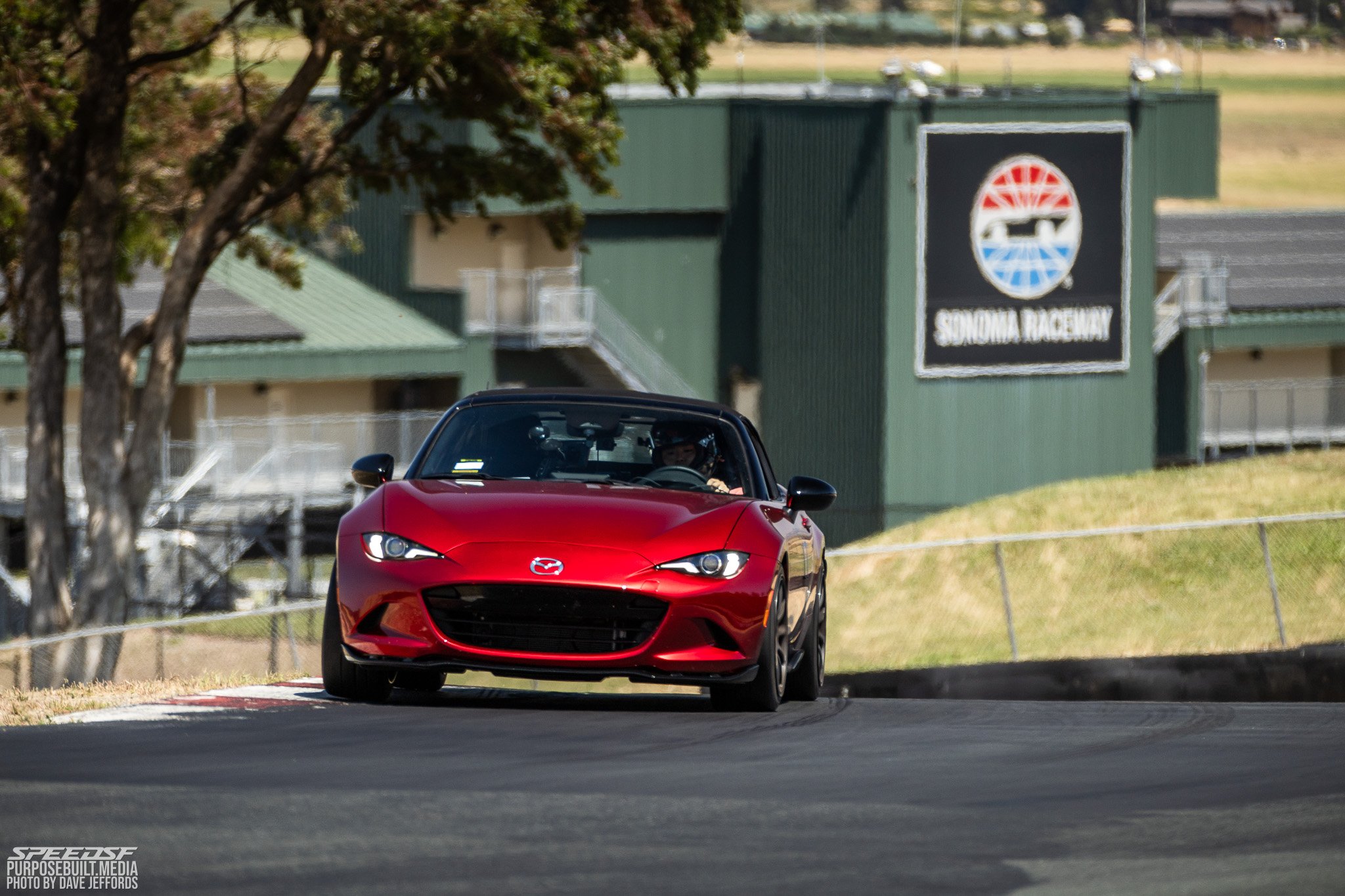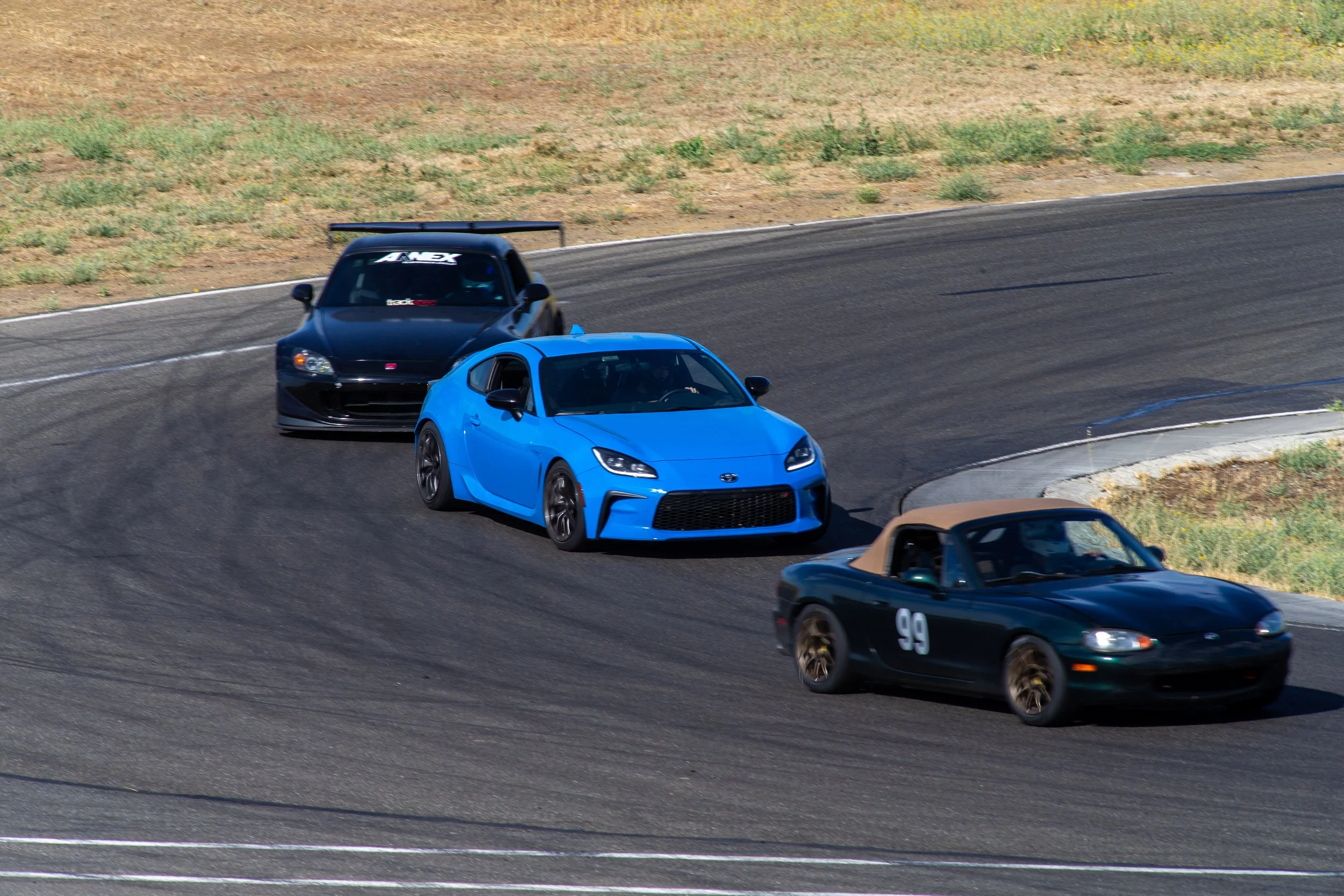Weize’s ND3 Miata: Sim Prep Fortification
Like his friend Fan You, Weize Mao started trackdays without a well-developed plan, but the realities of track work compelled him to come up with a strategy to maximize seat time and get the greatest return on what was proving to be a pricey pastime. He dipped his toes in the water with a few casual dates at Sonoma in his GR86, but the cost of track time pushed him to to try something else to supplement the real-life experience.
For the price of a new set of tires, he put together a rudimentary simulator and began logging laps. “I’d practice on Sonoma and Laguna on iRacing before going in real life, and that was the pattern I’d follow.”
This gave him a quiet, relaxed setting to study the art of driving and answer some questions that had been pestering him. “From the start, I wondered why I had to follow the specific rules of driving you would read on the internet — I wanted to know the reasons behind those rules.
For me, sim racing has helped me to know how to drive the car correctly. Many people will say that the lines, the grip levels, and the details aren’t realistic, but for me, those things do not matter. What matters to me is the way of driving correctly.
The takeaway I got is that rotation is very important. To turn the car as quickly and as cleanly as possible, then getting back to the gas early is what matter the most, and that applies to the real world. With that approach, I can get a competitive time with my first or second track day in real life with a new car,” he explained.
Rotation, and comfort with it, directed his early path. Before the GR86, Weize owned an ND2 Miata, but he found it too hard to control; it’s tendency to over-rotate worried him. He sold it for the longer-wheelbased GR86, with which he could push himself more comfortably.
Simulator practice familiarized himself with a rapidly rotating car, so he eventually returned to the Miata when he found the GR86’s lack of urgency limiting him. “The GR86 was fine for basic track work — good enough for fifteen days with it — and the lap times were quite good, but I felt I hit a driving plateau.
In order to push a car to the limit, you have to use front and rear. In the GR86, it’s front-limited. Probably due to the suspension design and the longer wheelbase. You always have to take the front’s limit into consideration first. The car is very stable and easy to drive, but I think the headroom is lower than something that really rotates.
Interestingly, this is not too different from what I experienced on iRacing: the GR86 Cup does not have as high a performance ceiling as the MX-5 Cup.”
It was the latter sim model which informed his build plan. I’ve done five track days with the ND2 now, and it’s reflected in the lap times. With only two days in the GR86 at Sonoma, Weize tried his new Miata at the same track and managed a time of 1:50 - about a second slower than he achieved with the GR. At Laguna, he clocked a 1:41.8 - again about a second slower. However, much less power made him work that much harder, and thus made the times more satisfying.
“I feel the platform is better balanced and more eager to rotate. It’s such a good platform to challenge you as a driver. There’s a notable difference in acceleration. At Laguna, there’s roughly 4-5 mph in trap speed. The GR86 doesn’t need as many shifts, either. At Turn 2, the ND2 needs to use 2nd gear , and the GR86 can use 3rd.
Under braking, I prefer the GR86. The ABS in the ND is quite weird. So when you’re under heavy braking, initially it has good braking power, but then the ABS intervenes as you want to turn in. It takes away from the braking performance, and it’s not consistent.
By the way, the OEM brake in the street-going is Miata is terrible. I totally lost my brakes at Turn 10 because the piston was leaking fluid like crazy. Immediately after that, I changed to the ND Cup’s Brembo BBK. It’s noisy and it doesn’t have the tension spring, but it’s great on track and very reasonable — much cheaper than the AP brake kit. Thankfully, you don’t need a lot of braking power for the Miata; just something reliable and consistent.
If I can get the rest of the MX-5 Cup parts, minus the transmission, I think I will get them. Currently, I have the BBK, the swaybars, and the strut brace. For the coilovers, I got MCS two-way remotes instead, but I think they’re on the same grade as the Penskes built for the Cup car."
And acquiring the experience is all he’s needed to build on the foundation built by sim experience. “Even if the grip level is different, you have a general sense of where the car needs to be stopped, when the turn-in phase begins, and when the throttle should be applied. Even if these points are slightly different between the sim and real life, it doesn’t matter — I can adapt as long as I’m comfortable with the principles of driving fast.
Sim training has helped me reallocate my mental energies to do other things aside from driving, so I’m more comfortable on the track. It makes it easier to enjoy driving.”
Both Weize and Fan are in the same sim racing league and share tips with one another, and it shows. Both have less than two dozen track days under their belts, yet they drive like people with years of seat time.
“I plan to train on the sim more and more, and then possibly getting into coaching to help people to combine sim racing and real-world driving. A combination of both is ideal. I think, for many people, the objective is similar: they want to be faster in real life. I believe I’ve proven that sim racing can help them move ahead in the real world without spending quite as much.”






